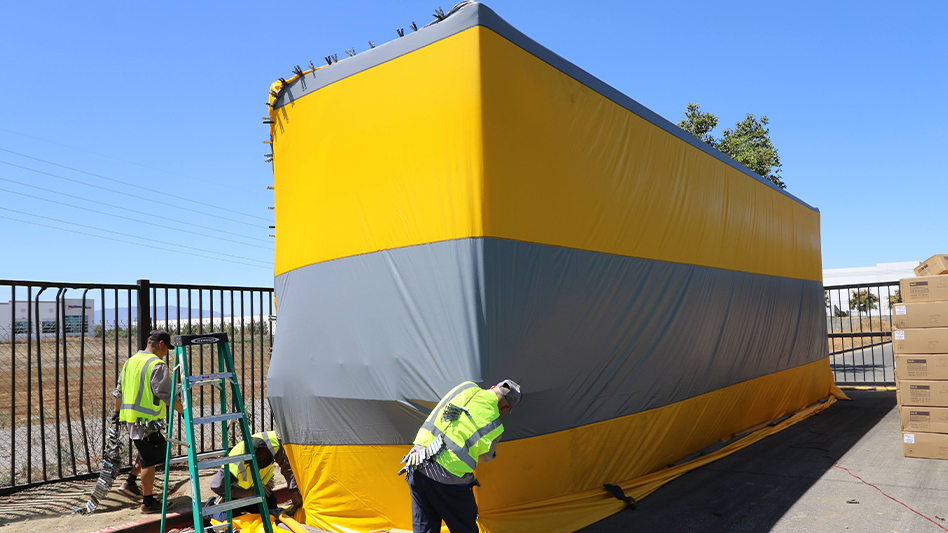We are excited to dive into the world of shipping container fumigation, a crucial process that ensures the safety and integrity of international shipments. Whether you’re a seasoned logistics expert or a newcomer to the field, this exhaustive guide will provide you with the knowledge and insight you need to navigate the complex realm of shipping container fumigation.
What is Shipping Container Fumigation?
Shipping container fumigation, also known as container fumigation, is a method of controlling pests and insects by releasing a controlled amount of a gas into a sealed shipping container. The goal is to eliminate any existing infestations and prevent new ones from occurring during transit. This process is essential for shipping containers that contain commodities like food, textiles, and machinery, which are susceptible to infestation by insects, rodents, and other pests.
Why is Shipping Container Fumigation Necessary?
The risks associated with pest infestations in shipping containers are numerous. In addition to causing damage to goods during transit, pests can also lead to costly delays, fines, and even recalls. The consequences of a pest infestation can be severe, resulting in significant financial losses and damage to a company’s reputation.
Some of the key reasons why shipping container fumigation is necessary include:
- Prevention of pest infestations: Fumigation ensures that any existing infestations are eliminated, reducing the risk of pests spreading to other containers or locations.
- Protection of goods: Fumigation protects goods from damage caused by pests, which can range from minor to severe.
- Compliance with regulations: Shipping container fumigation meets regulatory requirements for pest control in international trade.
- Reduced costs: By preventing pest infestations, fumigation can help reduce the costs associated with delays, fines, and recalls.
Equipment and Techniques Used in Shipping Container Fumigation
At Equip Intermodal, a leading provider of intermodal shipping solutions, they use state-of-the-art equipment and techniques to ensure efficient and effective fumigation. Some of the key equipment and techniques used include:
- Vapor phase fumigation: This method uses liquid fumigants, which are absorbed into the air and released as a gas, ensuring a consistent and controlled environment.
- Gas cylinders: Liquid fumigants are stored in gas cylinders, which are then connected to the fumigation system.
- Fumigation cabinets: These cabinets are used to contain the fumigation environment, ensuring that the gas remains within the container.
- Temperature control: Fumigation systems are designed to maintain precise temperature control, ensuring the most effective fumigation environment.
Types of Fumigants Used in Shipping Container Fumigation
Fumigants are substances that release gas to kill pests and insects. Some of the most common fumigants used in shipping container fumigation include:
- Methyl bromide: This gas is highly effective against pests like termites and bed bugs.
- Phosphine: Used to control pests like rodents, insects, and mites, phosphine is highly effective in high-pressure applications.
- Hydrogen cyanide: This gas is used to control pests like ants, roaches, and rodents.
Benefits of Professional Shipping Container Fumigation
While it’s possible to undertake container fumigation in-house, there are numerous benefits to hiring a professional fumigation service:
- Expertise: Professional fumigators have extensive knowledge and experience with shipping container fumigation.
- Equipment: Professional fumigators invest in the latest equipment and techniques, ensuring efficient and effective fumigation.
- Regulatory compliance: Professional fumigators are aware of all regulatory requirements and ensure that all procedures meet international standards.
- Increased speed: Professional fumigators have the resources and expertise to complete fumigation quickly, minimizing downtime and delays.
Best Practices for Shipping Container Fumigation
To get the most out of shipping container fumigation, here are some best practices to follow:
- Inspect containers before fumigation: Ensure that the container is free from any existing infestations or damage.
- Choose the right fumigant: Select a fumigant that is effective against the specific pests you’re targeting.
- Follow regulatory guidelines: Ensure that all procedures meet international standards and regulatory requirements.
- Monitor the fumigation process: Keep a close eye on the fumigation process to ensure that it’s completed efficiently and effectively.
Common Shipping Container Fumigation Challenges and Solutions
While container fumigation is a critical process, there are common challenges that can arise. Here are some of the most common challenges and their corresponding solutions:
- Incorrect fumigation procedures: Improper equipment usage or incorrect fumigation procedures can lead to ineffective fumigation.
- Insufficient training: Lacking the necessary training and expertise can result in poor fumigation practices.
- Regulatory compliance: Failing to meet international standards and regulatory requirements can lead to costly consequences.
- Equipment malfunction: Equipment failure can cause delays and affect fumigation efficiency.
By following expert best practices and adhering to regulatory guidelines, these common challenges can be minimized, and shipping container fumigation can be carried out efficiently and effectively.
Conclusion
Shipping container fumigation is an essential process in international trade, protecting goods from pests and ensuring compliance with regulatory requirements. By understanding the process and the equipment and techniques used, shipping companies can ensure that their goods are protected, and their reputation is maintained. Whether you’re a seasoned logistics expert or a newcomer to the field, this comprehensive guide will provide you with the knowledge and insight you need to unlock the secrets of shipping container fumigation.


